Angela Slatter's Blog, page 94
December 9, 2014
Special Offer: The Female Factory
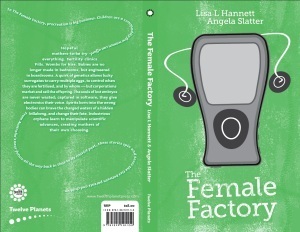 To celebrate the forthcoming release of The Female Factory by the award winning duo Lisa L Hannett and Angela Slatter, we’re giving away the ebook version with every preorder of the paperback for the whole of December.
To celebrate the forthcoming release of The Female Factory by the award winning duo Lisa L Hannett and Angela Slatter, we’re giving away the ebook version with every preorder of the paperback for the whole of December.
Simply order your paperback copy here.
To read an extract from the first story, “Vox”, follow this link to Tor.com.
Goodreads competition: Black-Winged Angels
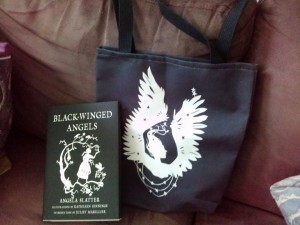 And so in the lead-up to Whatevermas I’m running another book and bag giveaway on Goodreads. The prize is a signed limited edition hardcover of my Black-Winged Angels collection, with illustrations by Kathleen Jennings and an Introduction by Juliet Marillier, PLUS a limited edition tote bag with the decorated with the art Kathleen created for the story “Flight”
And so in the lead-up to Whatevermas I’m running another book and bag giveaway on Goodreads. The prize is a signed limited edition hardcover of my Black-Winged Angels collection, with illustrations by Kathleen Jennings and an Introduction by Juliet Marillier, PLUS a limited edition tote bag with the decorated with the art Kathleen created for the story “Flight”
Go here to enter.
December 7, 2014
Nick Mamatas: The Nickronomicon and Other Stuff
 The Nickronomicon is the latest collection from author Nick Mamatas (Innsmouth Free Press). Nick’s other works include Love is the Law, The Last Weekend, The Damned Highway (with Brian Keene), and Move Under Ground. He is an anthologist and editor, and has been nominated for the Bram Stoker award five times, the Hugo Award twice, the World Fantasy Award twice, and the Shirley Jackson, International Horror Guild, and Locus Awards. He is possessed of an outstanding talent, many opinions, and a rather fetching leather jacket.
The Nickronomicon is the latest collection from author Nick Mamatas (Innsmouth Free Press). Nick’s other works include Love is the Law, The Last Weekend, The Damned Highway (with Brian Keene), and Move Under Ground. He is an anthologist and editor, and has been nominated for the Bram Stoker award five times, the Hugo Award twice, the World Fantasy Award twice, and the Shirley Jackson, International Horror Guild, and Locus Awards. He is possessed of an outstanding talent, many opinions, and a rather fetching leather jacket.
1. So, what do new readers need to know about Nick Mamatas?
Nothing, or at least I hope that is the case. If you need to know me to enjoy or even comprehend my stories, I’ve done something wrong. It’s one of the sad side effects of both biographical criticism (way back when) and social media (right now) that some readers feel the need to know the author in order to read the work. Some of the poor dears only want to read the work of “good people”, or at least people they can imagine being friends with. Of course, I say this even though I’ve been blogging for over a decade, and I tweet constantly, though generally I just talk about whatever is on my mind, whether or not it is reader-friendly or not. My little Livejournal user-icon of two pigs in a sty saying “We’ll Never Buy Your Work Again!” (a common lament after I express some controversial political or aesthetic opinion, mostly by people who have never bought my work before) has gotten a fair workout over the past ten years.
Well, that paragraph isn’t exactly designed to make a good first impression, is it? I’ll say I’m a writer, primarily of short fiction and short novels, that writes fairly widely across genres: horror, fantasy, experimental fiction, crime, etc. The novelette “Real People Slash” in my latest collection, The Nickronomicon, is baldly autobiographical except for all the cosmic horror. It’s about squat defense, running from an NYPD armored personnel carrier—the police have been militarized for nearly twenty years though apparently it’s only news in the United States now—and then moving to Vermont. I live in California now, like a normal person.
2. What was the first Lovecraft story you ever read and what about it sticks with you to this day?
Hmm, I don’t actually know. I presume it was “The Rats in the Walls”, as that story is widely reprinted in textbooks for junior high school and high school students, so I probably ran across that early in life, without even attaching the author’s name to the story. I presume it was an abridged version too, given that the cat in the story is named Nigger-Man. I actually don’t think it’s a great story—it even ends with the title, which was an old trick even when Lovecraft was writing. What I do remember clearly is the line about a bunch of human or semi-human bones. “Semi-human” was just incredibly evocative; it’s as though the whole story spins on the axis of that little detail.
3. What was the inspiration behind The Nickoronomicon?
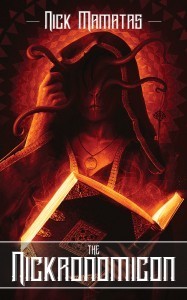
A vegan cookbook. A few years ago, I was at a party and one of the hosts was dating the co-author of Veganomicon: The Ultimate Vegan Cookbook, and a copy was on display in the kitchen, ready to be casually discovered by the party-goers. I saw it and thought to myself “Hey, I want an ___omicon book” and of course “Nick-ronomicon” came immediately to mind. Actually, The Nickronomicon was the working title of my writing essay book Starve Better, but saner heads prevailed. We wanted people who didn’t already know of me to feel like they could buy that book. The title drifted for a while, then Silvia Moreno-Garcia approached me about collecting my Lovecraftian fiction for Innsmouth Free Press, and we just went with it.
4. In general, who and/or what are your writing influences?
All writers get asked that question a lot, and it’s a difficult one to answer honestly, so I suspect most people don’t. Clearly, I’ve written a dozen or more Lovecraftian stories (out of over one hundred published) but is he an influence? I mean, one could say that my gimmick is writing in modes as far from Lovecraft as possible—Beat Lovecraft, gonzo journalism Lovecraft, New Narrative Lovecraft, postmodern Lovecraft where if I am writing pastiche at all, it is pastiche of David Foster Wallace and not of HPL. I love Ellison’s stories, but is he an influence? I certainly don’t sit down and think, “What would Harlan Ellison do?”
On the other hand, I read five Edward St. Aubyn novels this autumn and was so enamored of his use of roving point of view that the next story I wrote used it too—but that story is about working-class people in a dieselpunk world, an alternative 1930s, and St. Aubyn’s books are autobiographical novels about the collapse of the lower echelon of the British aristocracy as seen through the eyes of his alter ego Patrick Melrose. The family loses their summer mansion in France, boo-hoo! My story, “We Never Sleep”, which will appear in The Mammoth Book of Dieselpunk in July, would likely not ever be pegged as influenced by the Patrick Melrose novels except that I just told the Internet.
On the other hand, one could put my novel Love is the Law very easily in the same Ellen category with Sara Gran’s Claire DeWitt series and Elizabeth Hand’s Cass Neary novels, and I love them and read them first and those books made me want to try, but when I was writing Love is the Law I gave zero thought to those authors or their wonderful books. The whole book came from somewhere else.
 5. When did you first decide you wanted to be a writer?
5. When did you first decide you wanted to be a writer?Most kids who do well in school and like to read probably decide to be a writer early on, and then also decide to be paleontologists, ice cream men, professional wrestlers, homemakers, brain surgeons, etc. I had no inkling of what being a writer meant or took though. Everyone in my family, when I was a kid, either worked in a restaurant or in construction or as a mechanic of some sort. Sure, I wanted to be a writer. I read the book Sport by Louise Fitzhugh, and in that book Sport’s father is a freelance writer and just sits around and gets checks, albeit small ones, in the mail. Sounded good to me, though Sport’s dad was the poor parent. At least he was poor and safe at home instead of poor and hanging off a longshore crane in sub-freezing temperatures. But had you asked if I wanted to be Spider-Man, or a Loch Ness Monster wrangler, I would have said sure to that as well. I never even met an adult college graduate whose own parents had been to college as well until I actually went to college myself. It all seemed equally impossible to me, though my parents were committed to my education, and didn’t want me busting hump in a restaurant like every other Greek. (True story: I was enrolled in a Greek Orthodox parochial school as a child, and when we first got to the bus stop the other mothers asked my mother which restaurant her husband worked at. It didn’t occur to anyone that he wouldn’t be a waiter or, if set up by other relatives, a maitre d’).
When I got to college, I wanted to make films. I picked up a little knowledge of wiring from helping my father build a house, so I became a gaffer and schlepped lights around various location shoots in the early 1990s, when independent film was getting big, but mostly industrial video and local cable paid my bills. Work dried up in during the Clinton-era recession, and I answered an ad in a newspaper looking for writers. It was a term paper mill, and desperate, I took the job—really, it was a “gig.” Everyone has gigs now and is a member of the precariat, but I was part of the vanguard of losers. I wrote term papers for years, and as I knew my way around the Internet thanks to college, I started writing about it for little art magazines. Then I started doing web content, writing for the business and culture magazines covering the first dot-com boom, and floated into what was then called “punk publishing” in New York’s Lower East Side. I became serious about writing—first, radical journalism and then after 9/11 when most of the so-called left lined up behind the war in Afghanistan and Iraq, fiction.
Honestly, I just liked the idea of working from home, rather than waking up at 4am to make early-morning calls to far-flung location shoots. I eased into being a writer and publishing professional.
6. Name six people, living, dead, fictional or real, that you’d invite to a dinner party – and why would they make the guest list?
I hate to seem like I am dodging all these questions, but I can’t imaging inviting people to a dinner party other than the people I’ve previously had over. I just came back from visiting from relatives in Florida for Thanksgiving, and enjoyed the many dinners I had with different assortments of cousins, aunts and uncles, parents and grandparents, and family friends there. I suppose it’s a shame to answer, “Any six of the fifteen-twenty people I had dinner with two weeks ago,” but there you go.
I was never into meeting famous writers or important figures from history, though I suppose I would like to meet and strangle Stalin. A few years ago at a reading at KGB Bar in New York a reader was very excited to meet me (he even met my sister at the same time and was thrilled for that as well) and I was utterly dumbfounded. Who the hell cares? I have managed to meet and even work with people I admired since I was young—editor Ellen Datlow and screenwriter Sam Hamm come immediately to mind—but they’re just people. Ultimately, when I think of this question I think of one of the many versions of the disastrous dinner conversation between Joyce and Proust that get passed around occasionally:
Joyce: I’ve had headaches every day. My eyes are terrible.
Proust: My poor stomach. What am I going to do? It’s killing me.
In fact, I must leave at once.
Joyce: I’m in the same situation. If I can find someone to take me by the arm. Goodbye!
Proust: Charmé. Oh, my stomach.
I imagine any dinner with dead/living famous people would go much the same way.
7. If you weren’t a writer, what would you do?
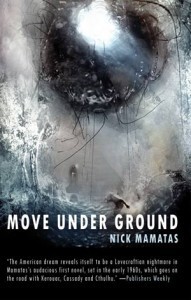
Before I became a writer, I was an electrician and camera operator for film and video, so I might still be doing that. Perhaps I would have been demoted to wedding videography by now.
Honestly, I’d probably just be busting hump somewhere: mate on a ferry, landscaping, doing A/V set-ups at a conference center or a university, real estate, bookselling. Writing is a lot like having a bunch of odd jobs anyway, so I’d just switch out to other odd jobs.
8. In your opinion, what are the five essential character traits any writer needs?
Needs to do what? I’ll just say “Get published well enough to have some non-incidental readers.” That, some audience of people would seek out the work. I’ll also leave out people who write purely instructional material, or compile basic information from the public domain. Plenty of people seek out that stuff, but not because of the writer or editor.
I’d say that writers need a certain kind of narcissism to walk through a major bookstore or library and say, “Yeah, what this place is missing is me.”
Patience is also a necessity—even the self-published who need not wait for a nod from an editor or publisher, need patience to find and cultivate an audience.
A masochistic sensibility is also required, given rejection, negative reviews, and generalized futility. I’m tempted to say humility, but that’s difficult given the narcissism is number one.
Of course, they need to live in an environment that tolerates economic spaces for writers. It’s not everywhere, didn’t always exist and we cannot assume that it will always exist.
And they need someone who cares.
9. What should always be edited out of a story?
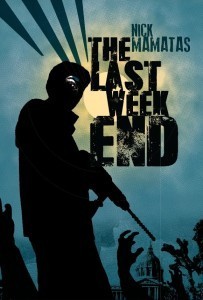
Pretty much anything that involves the appearance or activities of eyes. “Eye” sentences almost always sound ridiculous, and it’s amazing where these sentences turn up. I just read the wonderful memoir Nights at Rizzoli by author Felice Picano. And it’s great and a lot of fun and there is one howler when the author describes the face of one of his friends thusly: “she had big pools of brown eyes.” Yikes! If you weren’t imagining a pair of inflatable kiddie pools filled with slimy little brown eyes when you first read that sentence, you are now.
10. What’s next for Nick Mamatas?
I have a crime novel called I Am Providence that I have to finish. I’m pretty excited about my novelette “We Never Sleep” in The Mammoth Book of Dieselpunk. My 2007 novel Under My Roof is being made into a feature by director Jeffrey Lamont Brown, and I look forward to visiting the set in January and seeing where that goes. It should help bring the book, slightly revised, back into print as well.
December 5, 2014
Huzzah! Postscripts 32/33 Far Voyager
![postscripts-32-33-far-voyager-jhc-edited-by-nick-gevers-2524-p[ekm]298x418[ekm]](https://i.gr-assets.com/images/S/compressed.photo.goodreads.com/hostedimages/1417904491i/12593940.jpg) At long last the latest PS Postscripts anthology is available! It contains my story “Winter Children”, as well as tales by Lisa L Hannett, Angie Rega, Suze Willis, Alan Baxter, Gio Clairval, Rio Youers, Alison Littlewood, Gary Fry, and many others!
At long last the latest PS Postscripts anthology is available! It contains my story “Winter Children”, as well as tales by Lisa L Hannett, Angie Rega, Suze Willis, Alan Baxter, Gio Clairval, Rio Youers, Alison Littlewood, Gary Fry, and many others!
Huzzah!
You can order Far Voyager here.
December 4, 2014
2015 Short Story Clinic
 So for those of you in Brisbane who are familiar with the Queensland Writers Centre, you’ll know they run a great range of courses for writers at all stages of the learning process.
So for those of you in Brisbane who are familiar with the Queensland Writers Centre, you’ll know they run a great range of courses for writers at all stages of the learning process.
Next year I’ll be teaching the Short Story Clinic again for QWC. It’s a course I really enjoy teaching because I get to work closely with new writers and do my best to help them get their work to publishable standard, as well as give them tools and tips to use through the rest of their writing careers. And it is always a delight to see old students returning and to hear of their successes!
If you’re interested, the details are here.
Over at Tor.com …
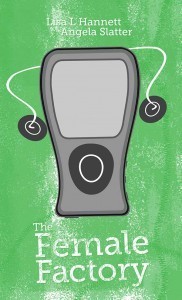 … an extract from The Female Factory is appearing!
… an extract from The Female Factory is appearing! 
If you’d like to read part of the first story, “Vox”, then head on over here.
Children are a commodity few women can afford. Hopeful mothers-to-be try everything. Fertility clinics. Pills. Wombs for hire. Babies are no longer made in bedrooms, but engineered in boardrooms.
A quirk of genetics allows lucky surrogates to carry multiple eggs, to control when they are fertilised, and by whom—but corporations market and sell the offspring. The souls of lost embryos are never wasted; captured in software, they give electronics their voice. Spirits born into the wrong bodies can brave the charged waters of a hidden billabong, and change their fate. Industrious orphans learn to manipulate scientific advances, creating mothers of their own choosing.
December 3, 2014
New Work: Corpselight
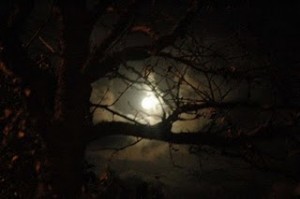
Source: http://www.fairyist.com/fairy-sightin...
We, now that the final tweaks are on Vigil and it’s off on its journey, there’s no reason not to start writing the sequel. Corpselight is the second of the Verity Fassbinder books. The first draft of the opening is below.
Corpselight
by Angela Slatter
She took a longish time getting out of her car, smoothing the workday creases from her Donna Karan suit, collecting her handbag and the briefcase. She jingled the keys in the front door of the house, as if the noise might ward off evil spirits. As if it might let them know she was home and they should disappear. The hallway looked fine, but the smell hit her before she got even two steps inside. Steeling herself, she followed the stench.
Mud.
Again.
On the expensive silk at the base of the rocker-recliner that had replaced the last one; oblongs of insufficiently jellified gunk, almost like footprints but lacking definition. Up close, the odour got worse, and she noticed the whole chair wore a thick coat of the same crap. And it wasn’t just mud. It was filth. Ooze. Fetid, decayed, contaminated, liquefied death.
She was, perhaps, less surprised than she should have been.
It was the third such occurrence in as many months. Always on the fifth. Always when she returned from work, as if they’d waited until she was gone in the morning. Always in the same spot. None of last night’s precautions had done a damned thing; she’d be having words with the bloody hippy chick at the West End spook shop.
She couldn’t imagine the insurance company would pay out. Not again. Not even under the Unnatural Happenstance provisions.
The first time this had happened she’d been unnerved; yes, even afraid.
The second time, she’d been annoyed and thought, Tricks. Shitty little tricks. Shitty ghosty little tricks.
This time, she thought, Fuck ‘em.
‘It’ll take a damned sight more than this,’ she told the empty room. Shouted, actually, made sure her anger carried the words all through the house. She moved on by way of the dining room to find an answer of a sort; or simply a variation on a theme.
The kitchen was awash with brown.
Slither marks patterned the linoleum as if a school of middling-sized snakes had run amok. The biggest puddle was in front of the fridge. She picked her way across, stepping on the cleanish patches, careful not to slip, careful not to get crap on her expensive new shoes.
The handle of the fridge door was pristine and she grasped the coldly sweating metal with her own heated palm. She pulled.
There was a moment, one of those frozen seconds when things stood still. In theory, in that moment, there was time to step away, to jump to safety. In reality, the chocolately rectangle filling the matt silver Fisher & Paykel quivered and slid out onto her feet with an obscene sucking sound, leaving her shin-deep in muck.
Then the doorbell rang.
***
December 2, 2014
Horizon by Keith Stevenson
 Long-time leading light amongst Australian editors, Keith Stevenson, has recently released the science fiction novel Horizon through HarperCollins. Ze blurb:
Long-time leading light amongst Australian editors, Keith Stevenson, has recently released the science fiction novel Horizon through HarperCollins. Ze blurb:
Thirty-four light years from Earth, the explorer ship Magellan is nearing its objective – the Iota Persei system. But when ship commander Cait Dyson wakes from deepsleep, she finds her co-pilot dead and the ship’s AI unresponsive. Cait works with the rest of her multinational crew to regain control of the ship, until they learn that Earth is facing total environmental collapse and their mission must change if humanity is to survive. As tensions rise and personal and political agendas play out in the ship’s cramped confines, the crew finally reach the planet Horizon, where everything they know will be challenged.
Keith took some time out to answer a few questions about Horizon.
1. So, what do new readers need to know about Keith Stevenson?
Well, I’ve pretty much immersed myself in science fiction for the last forty odd years and I really love sci-fi that takes place off-planet, presents real people dealing with believable science and technology and also tackles socio-political issues that are relevant to our times. If that sounds like something you love too, I have a debut novel I can recommend…
2. What was the inspiration behind Horizon?
I tend to work off images and inspirations and Horizon came out of a strong image I had of an astronaut waking from some kind of hibernation and almost choking to death. It led me to ask a lot of questions about who she was, what was happening to her, what was her mission and where was she going. I’d wanted to write a ‘real’ sci-fi novel for a long time and I’m a great believer in the power of the subconscious to react to our desires and wishes and offer up prompts to help us along the way. That image was the start and set me on the track not only to find out more about my astronaut but, as the story developed, to do a lot of research to build in believable science to make my spaceship and the voyage it takes as realistic as possible.
3. Tell us about the cover art.
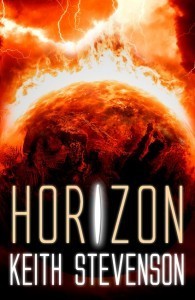
It’s a great cover! Actually it wasn’t the first option, but the folks at HarperCollins let me provide some suggestions. It’s a (sort of) scene from the book so it fits in quite well, but given one of the main themes of the book is about planetary ecosystem collapse, I think it expresses that very well too.
4. What made you choose HarperCollins as a vehicle for Horizon?
I’d been subbing Horizon around a few outlets over the years and come up dry, but when HarperVoyager announced their digital submission intake around October 2012, I sent the ms along and hoped for the best. If they hadn’t picked it up I had thought to self-publish, but I guess I was lucky and it’s a real privilege to be published by the Voyager imprint. They’ve supported so many Australian spec-fic authors over the years and published some great stories.
5. What are the challenge of being an editor who writes fiction … or a fiction writer who edits?
Ha! My partner often points out my poor spelling and grammar in my written work. As a writer I just get on and write, I’m not ‘being an editor’ in the background, and I don’t think I could write if I was. Of course I go back and edit my work as best I can but, like any other writer, I’m too close to what I’ve written to really step back and I know I need an editor to look over it before it’s finally ready. As an editor I can be much more objective about the pieces I receive, and I’m in a different mindset when it comes to grammar and punctuation!
 6. How did your online magazine project Dimenson6 come about?
6. How did your online magazine project Dimenson6 come about?A few things came together to create D6. The last couple of books I published took me two years apiece and I just wanted something that would be a quicker turnaround project wise. I also wanted to tear down the paywall between readers and great Australian speculative fiction, not because I think all fiction should be free but D6 is about promoting great work and hopefully leading new readers to buy more of the same from other sources. The reaction has been great and we’ve had over 800 downloads of the first three issues.
7. In general, who and/or what are your writing influences?
I grew up reading Philip K Dick, Isaac Asimov, Larry Niven, Cordwainer Smith, James Blish, William Gibson, Robert Heinlein, Iain M Banks, Stephen King and so many others. They all create believable worlds with real characters facing fantastic events or adventures. Some are more political, some more cerebral or emotional, some are just batshit crazy but they all tell great stories. That’s why people read them.
8. Who is your favourite heroine/hero in fiction?
Hari Seldon from the Foundation Trilogy was pretty cool: an amazing intellect who put in train a sequence of events to save humanity, despite the political machinations of those who opposed him. That’s pretty heroic.
9. Who is your favourite villain in fiction?
Right now it’s a character called Troels Volmar in the Lenticular Series books I’m currently writing (see below). I like villains who aren’t evil, but who are prepared to do what is expedient for the ‘greater good’ as they see it. It helps if they’re incredibly clever, devious and calculating. Troels is a heavy hitter in all those areas. He does what needs to be done, because he believes it’s important to protect Earth at all costs. You may not agree with his methods, but you’d like him in your corner if push came to shove.
10. What is next for Keith Stevenson?
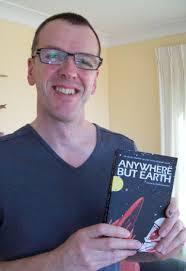
As soon as I finish the next lot of reading for Dimension6, I’m back into my space opera trilogy The Lenticular series which is about an invasion by Earth of an alien planet, torture, degradation, space battles, escapes, redemption and revenge. Hopefully reading it is going to be as much fun as writing it is.
Refreshingly plausible, politically savvy, and full of surprises, Horizon takes you on a harrowing thrill-ride through the depths of space and the darkness of the human heart. Sean Williams, New York Times bestselling author of the Astropolis and Twinmaker series.
Crackling science fiction with gorgeous trans-human and cybernetic trimmings. Keith Stevenson’s debut novel soars. Marianne De Pierres, award-winning authors of the Parrish Plessis, Sentients of Orion and Peacemaker series.
November 26, 2014
Schlock talks to Kathleen Jennings
[image error]My favourite illustrator chats with Schlock Magazine about art, creating and agonising.
How do your creative processes differ when you’re working on art or writing, if there is any?
In writing, I write then agonise. In illustration, I agonise, then draw. The first half is where the discovery happens, the second is where it is refined.
I push ideas further in illustration – not that the viewer can tell! When writing, I’m conscious of being conservative and protective of my characters. The illustrations feel more representational to me.
But they are both forms of storytelling, and I keep finding out new ways in which the lessons and principles of one form can be applied to the other. Movement, detail, simplicity, contrast, focus…
The rest is here.
November 24, 2014
The Female Factory: Vox
 When Alisa approached us about doing one of the Twelve Planets, we readily agreed. Then, having sprung her trap, she added “But make it more science fictiony.”
When Alisa approached us about doing one of the Twelve Planets, we readily agreed. Then, having sprung her trap, she added “But make it more science fictiony.”
Cue Mo Szyslak from The Simpsons … “Whaaaaaa?”
Undeterred, and a little heavy of heart, we two dark fantasy and horror girls trundled away dragging our feet. We were in the middle of other projects and deadlines: both finishing novels and various commissioned short stories, Lisa also digging her way through her first year as a full-time academic and Angela also completing two short story collections and a novella, as well as teaching for the Queensland Writers Centre. We Skyped. We emailed. We kvetched about the collection in general. We talked space shuttles and other planets, what the value of an embryo might be in a distant future where procreation had become more and more difficult for the human race.
We nearly gave up and ran away the moment we wrote a scene that started with the words: ‘Robyn eased back; the shuttle was new. Very new, and its controls were touchy, responding almost to her every breath. She’d flown a much earlier model before, but never one so well-maintained, so responsive, so in touch with its own gravity-defying aerodynamics. So freaking expensive – her old apartment, the one she’d had to give up when she couldn’t make the payments, hadn’t cost as much as this vessel.’
This was not our writing.
But we are nothing if not professional ? not to mention astonishingly stubborn ? and we kept throwing ideas back and forth. We pulled away from stories of a far-flung future and brought things closer to home, a not too far distant Australia. Our initial notes read something like:
Badger birth woman
Baby-soul voices
Fish changing sex in different temperature waters
Orphans and body parts.
Those fragments were built into The Female Factory. The first story in the collection is ‘Vox’, in which “The souls of lost embryos are never quite gone, never wasted; captured in software, they give electronics their voice.” ‘Vox’ was Lisa’s baby; she had the first spark that began the tale, and it was the product of idea-hording.
Some of the best ideas are gleaned from overhearing banter on the bus, or from chatting with friends, or even half-listening to dull presentations at work: you mishear something and bam! it’s a story idea… Or, in this case, someone says something striking in conversation, not giving it a second thought (forgetting you’re a writer and will ruthlessly collect story-seeds), and you tuck that image away for months or years, waiting for the right circumstances in which to use it.
That sounds rather mercenary, doesn’t it? It wasn’t meant to be so; but when Lisa’s friend told her a sad tale about another friend (it’s always “a friend of a friend” in these situations, isn’t it…) who’d had trouble conceiving, who’d done IVF and the whole nine yards, and no doubt would have done some of the things Kate and Nick do in this piece – and when this friend finally fell pregnant, but not as she’d imagined, the outcome really stuck in Lisa’s memory.
(PSA: you’ll never know what writers will find striking, so there’s no use in censoring what you say to them. Whether it’s personal or totally silly, the things you reveal — knowingly or unknowingly — might spark something in their minds. Then again, they might not. One way or the other, writers are always listening.)
From that little seed of inspiration, a series of questions arose that set ‘Vox’ in motion. 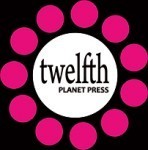 What if, Lisa wondered (many weeks later) you finally found yourself pregnant after years of failure? And what if circumstances prevented you from being truly happy about this? How would you feel, desperate for children, having to let them go? But then what if technology could offer a substitute for the children you’d lost? Would this replacement mollify or outrage you? Would it be enough?
What if, Lisa wondered (many weeks later) you finally found yourself pregnant after years of failure? And what if circumstances prevented you from being truly happy about this? How would you feel, desperate for children, having to let them go? But then what if technology could offer a substitute for the children you’d lost? Would this replacement mollify or outrage you? Would it be enough?
In ‘Vox’, we explored some possibilities, and the answers may not be for the faint of heart.



